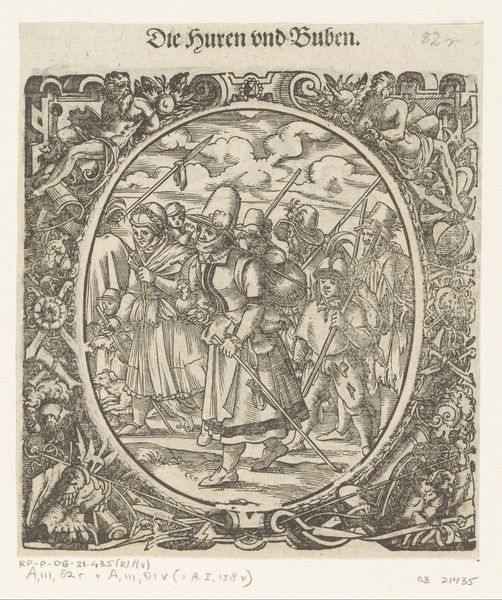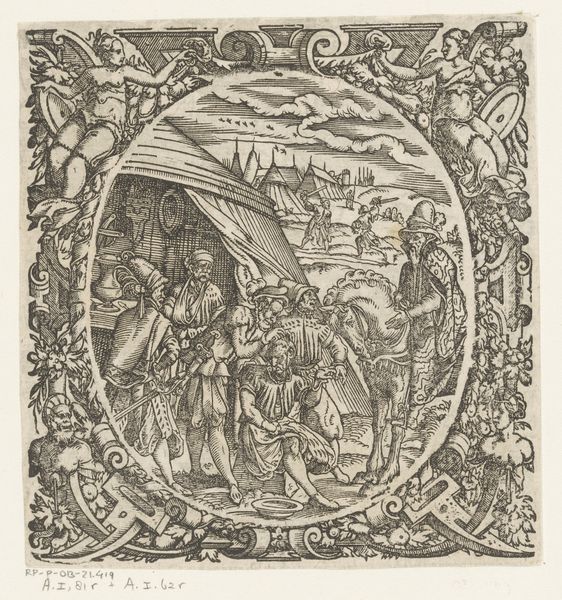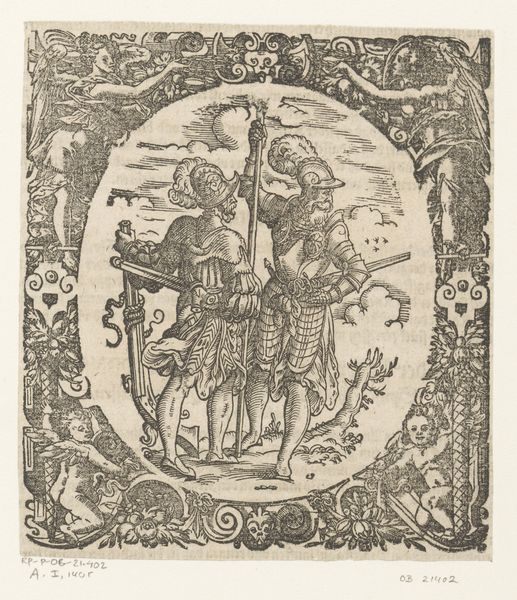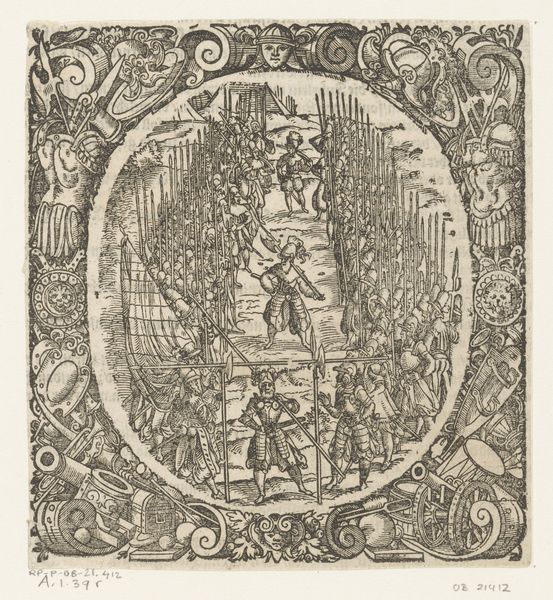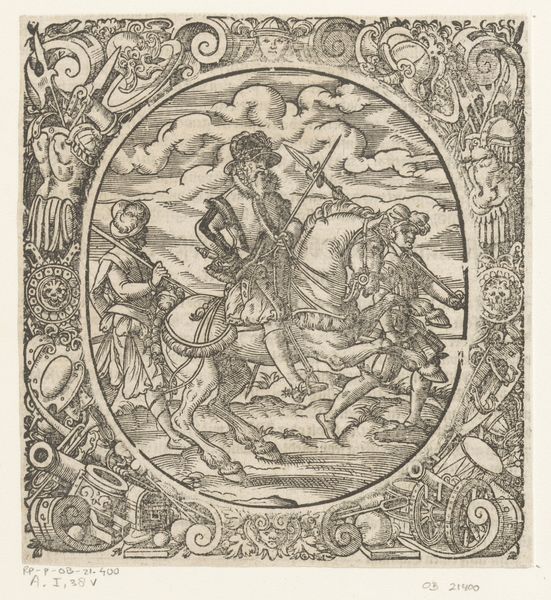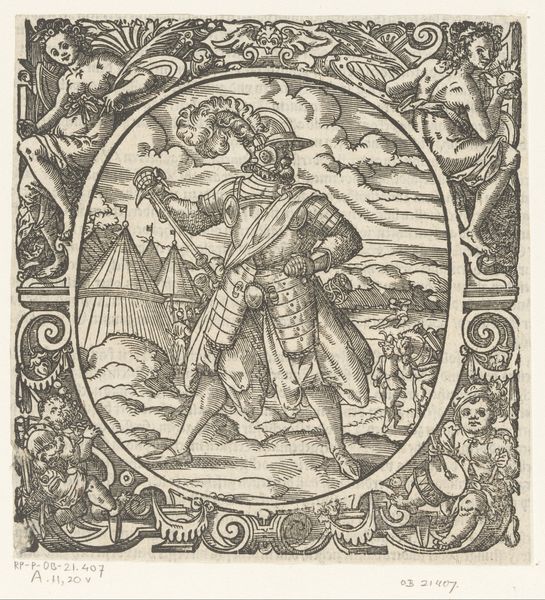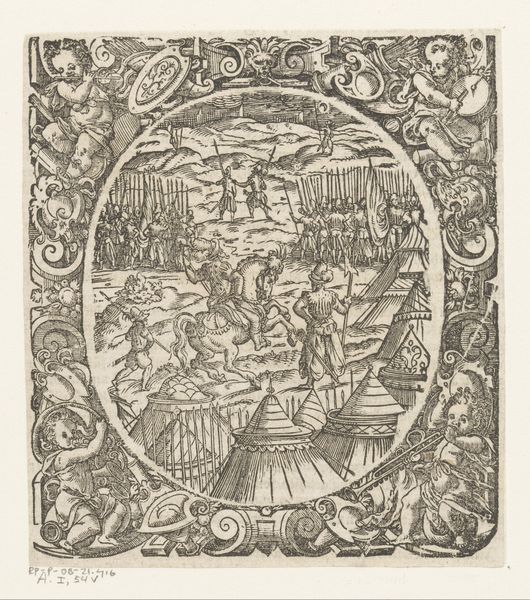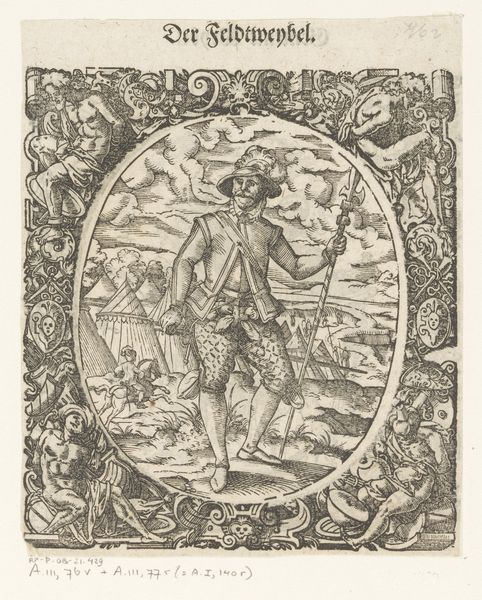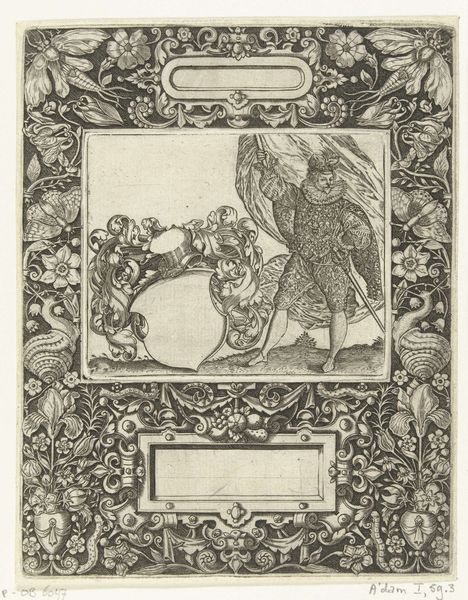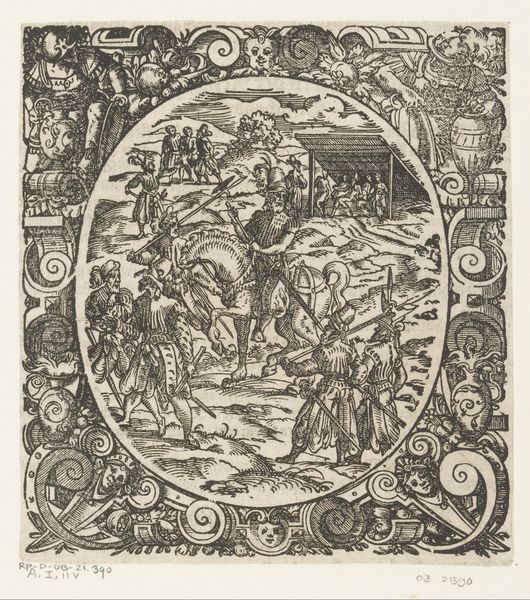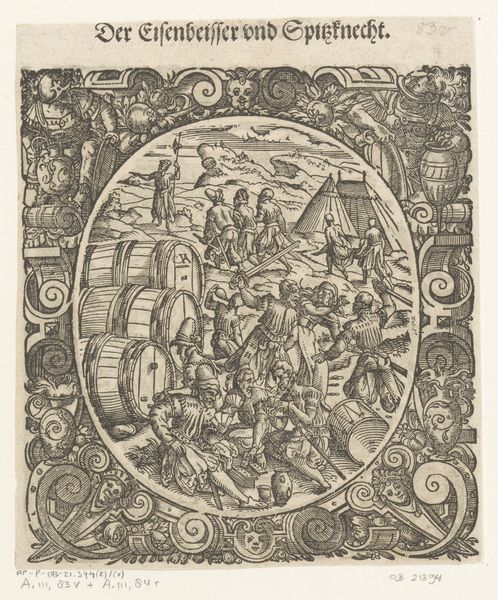
drawing, print, engraving
#
portrait
#
drawing
#
medieval
#
narrative-art
#
pen drawing
# print
#
old engraving style
#
figuration
#
engraving
Dimensions: height 142 mm, width 135 mm, height 115 mm, width 100 mm
Copyright: Rijks Museum: Open Domain
Curator: Jost Amman's "Beul," created in 1573, invites contemplation of justice and authority. The work, residing here at the Rijksmuseum, is presented as a detailed engraving. What immediate impression does it leave upon you? Editor: Its striking use of line! The crispness of the engraving lends a stark, almost severe quality. The composition is fascinating; it's all framed within a circular motif teeming with smaller scenes and cherubic figures, contrasting starkly with the seriousness of the figures at the center. Curator: That central subject matter lends itself to so much discussion. Given its depiction of legal executioners and referencing the text "Der Nachrichter"—essentially, the executioner, it presents an opportunity to discuss class and gendered roles. Notice how the individuals portrayed reflect power structures. Editor: Absolutely. And beyond the subject, I find the circular frame itself really draws my eye. There's a constant play between the figures within the central image and the almost allegorical representations surrounding them. How the eye travels from the immediate grim task to the celebration of law. The composition as a metaphor. Curator: Consider then that it appeared during a time of significant religious and social upheaval; this imagery speaks volumes about control. We see references to classic tropes—cherubs, flourishes. But the men at the center are not romanticized, so their role becomes even more striking. Their authority has context. Editor: The interplay of light and shadow is fascinating. See the ways Amman uses shadow to give weight and volume. Also, if you isolate details—hands, for instance— the realism is astonishing, yet these exist within this almost dreamlike landscape. It makes one stop and really consider it. Curator: Understanding Amman's context—his religious and political leanings—helps contextualize it all, but its visual appeal lies precisely in this ambiguity you’ve pinpointed. It's through this tension that its potent political and social messages truly resonate and, hopefully, lead the viewer to challenge assumptions and consider perspectives outside their own. Editor: I agree completely. This work has a rare duality, where stark reality is contained with fanciful execution, leaving an impact that extends well beyond historical interpretation. It's this balance, or perhaps imbalance, that makes it so intriguing.
Comments
No comments
Be the first to comment and join the conversation on the ultimate creative platform.

